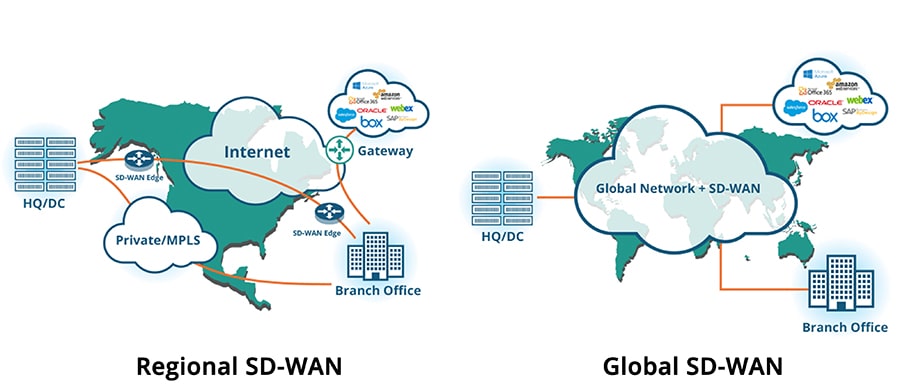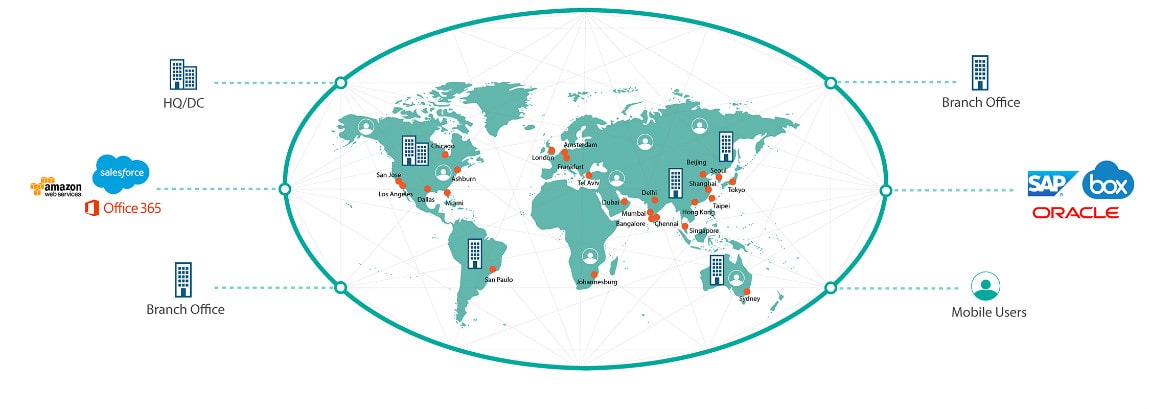4 Insights on MPLS Alternatives CIOs Need to Know

What’s the best alternative to MPLS? Last week I co-hosted a webinar with Scott Raynovich, Principal Analyst at Futuriom Research, to answer this in full detail. It was great to be able to provide insights to a variety of global enterprises on how to optimize application delivery for employees worldwide, without the need for legacy MPLS connections.
The webinar raised quite a few inquiries about Aryaka’s global SD-WAN, and a lively conversation resulted. Below are some of the questions and answers from our session.
And if you would like to learn more, you can watch the full recording here.
Q: What’s the difference between regional and global SD-WAN?
SD-WAN is not, in itself, a global or regional solution; how the network is built and maintained is what will separate a “regional” solution from a “global” one.
Application performance boils down to this, “How far away are you from the application, and what is the quality of your connection?”

In the case of Aryaka, we attack it from both angles: We provide you stable connectivity to any application origin, and we also optimize it for the middle mile as well, affecting latency and connection set up times.
Unlike other SD-WAN solutions, Aryaka has built a global private WAN with 26 Points of Presence (PoPs) less than 30 ms away from 95% of the world’s business users, we can ensure that the network delivers the same consistency, reliability, and security across the globe. Whether an employee is in New York or Singapore, and needs to connect to a data center on the West Coast, we can deliver the same user experience.
Q: What are the relationships with cloud providers to optimize your cloud applications?
We’ve already built the bridges to them. We have interconnects with AWS, and cross-connects with Azure. By utilizing IP at the edge, we’re agnostic to any application. Whether you’re trying to on-ramp Salesforce, a workload in AWS, or you need an ExpressRoute into Azure, those things are already pre-built for any application origin. You may even be using a very industry-specific ERP; we don’t need to have an established Layer 2 connection to our PoP to deliver an optimized performance. We simply need to know where you are going and how you are getting there. Then we can configure ourselves in the path with our nearest point of presence to that application origin.
This truly is every application origin, of thousands of available SaaS applications. And, these days, our customers average between 22 – 40 SaaS applications across the enterprise to all the different business units.
We’re able to address every single one of them.

Q: Can you integrate into an existing MPLS network to manage traffic across both links, MPLS and Internet?
The majority of our customers exist in some type of hybrid initially. In many cases, we have customers that have a regional footprint of connectivity that they’re perfectly happy with, but the company has now embraced globalization, and their pain points are those overseas, trying to get back. And we will coexist with that.
Generally, a data center or some type of central application origin becomes the interconnect point between the Aryaka footprint and the existing connectivity that they have. In some cases, they just want to use Internet between sites that don’t have latency and distance issues, and we’re only there solve the locations that need us.
We take great pride in our ability to coexist with existing footprints of connectivity. Whether it’s a complimentary footprint or it rides side-by-side with an existing footprint, it might replace the legacy in migration over time. The flexibility was something we designed for in the very beginning.
Q: What is the typical deployment time frame in a North American presence only?
Aryaka can deploy in a couple of hours. And it will outperform MPLS the minute you route traffic about it. And the reason is that hardware from Aryaka is not required at all to connect to us.
If you have an IPsec-capable firewall at the edge, you’re ready.
You simply create a connection to the nearest PoP on either end, and with embedded TCP optimization built into the network, it means that we will quicken connection set up time and enable bandwidth utilization as throughput by default, just by routing that traffic over Aryaka.
As fast as you can stand up an IPsec tunnel, we can have you running on Aryaka. Even internationally. We’ve done a deployment from Israel to New Jersey in 3.5 hours and had a 40x improvement in application response time the moment they began transiting traffic.
We leverage our ability to move that quickly as an opportunity for our customers to validate what we do and what we say we’re capable of doing on their own at no risk whatsoever. We’ll show you it works, and once we start deploying, if you’re like our existing customers, you will not look back.
Watch the full webinar MPLS Alternatives for Faster Application Delivery.
Learn more about Aryaka’s global SD-WAN for your business here.

